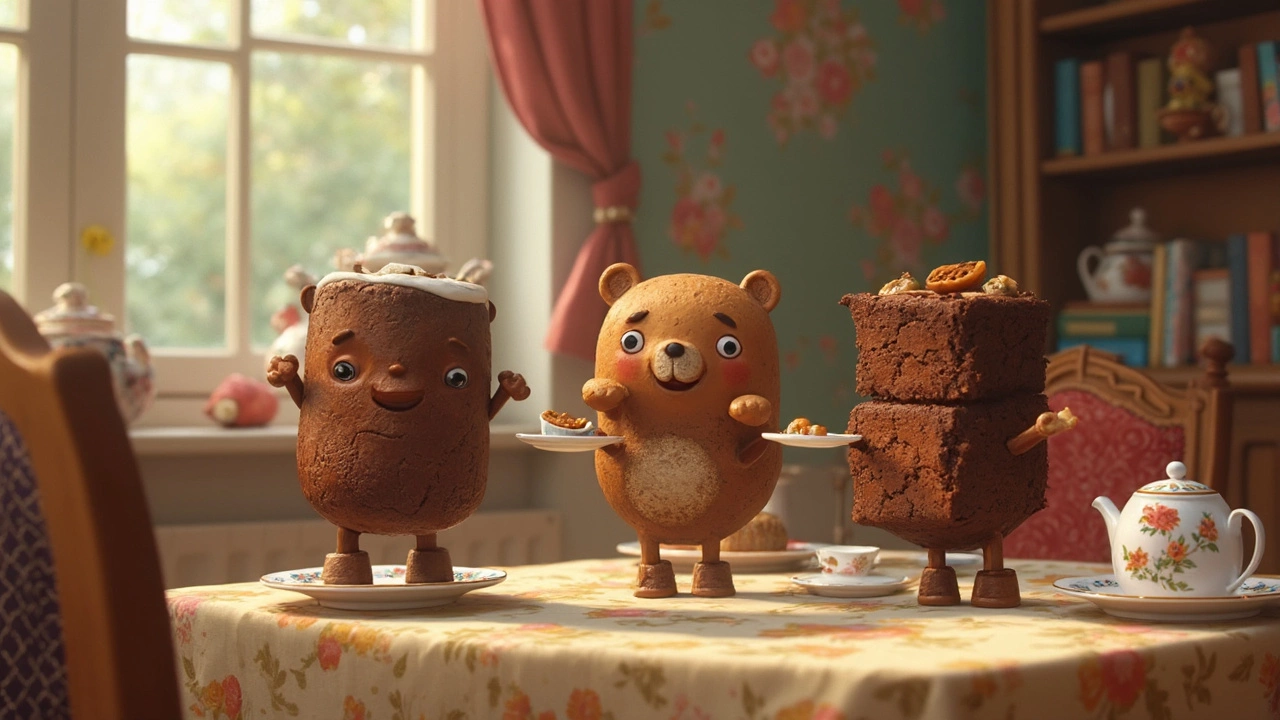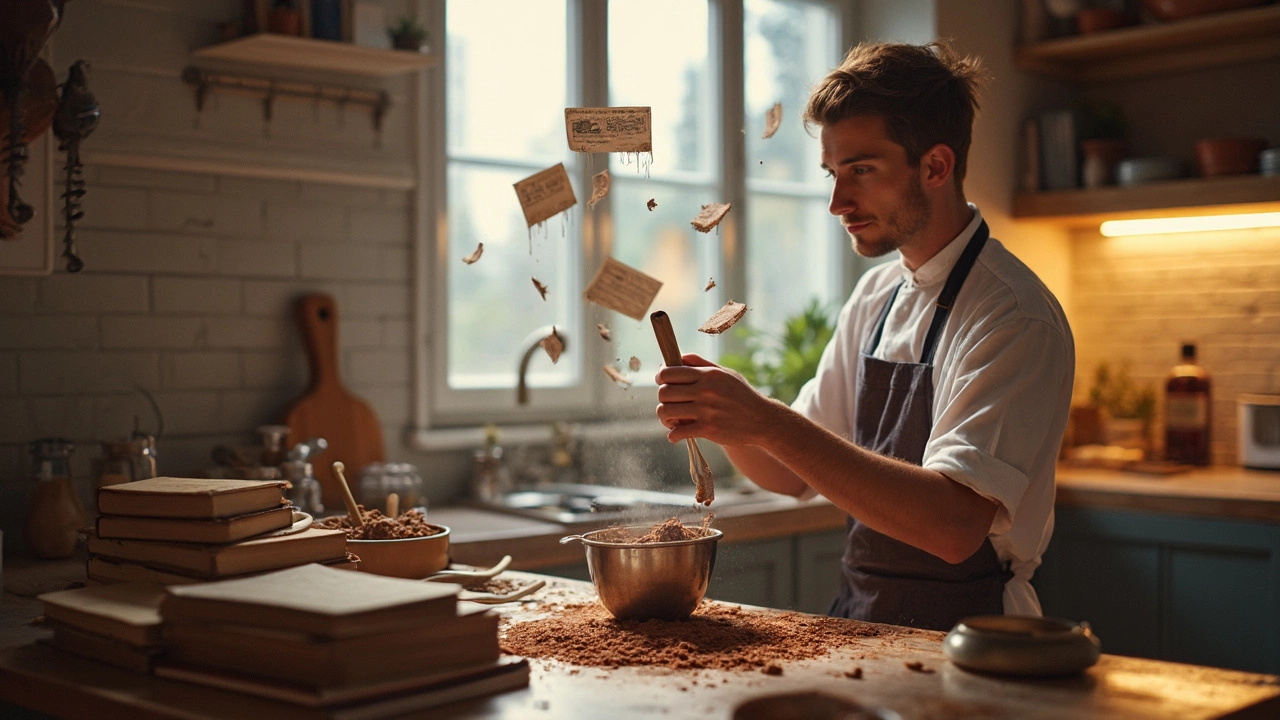
Who doesn't love a good brownie, right? That gooey, chocolatey slice of perfection has been a favorite for decades, but ever wondered where it came from? The origins are a bit of a mystery. Some say it was a baking mishap, others whisper of intentional genius—what's the real story?
As we dig into this delicious history, it’s like unwrapping a freshly baked mystery. Brownies appeared sometime in the late 19th century, but their exact birth is still debated. Some claim they first popped up in a cookbook in the early 1900s. Were they a deliberate creation, or just the result of a forgotten baking powder that left cake flat?
- The Mysterious Origins
- Early Brownie Recipes
- The Name's Story
- Fun Facts About Brownies
- Brownie Baking Tips
- Perfecting Your Own Recipe
The Mysterious Origins
The tale of how the brownie came to be is as fudgy as the treat itself. The actual origin is a bit contested, but let me share a couple of the most popular stories out there.
One legend suggests that it was all a happy accident. Back in the late 19th century, a baker in New England supposedly forgot to add baking powder to a chocolate cake, resulting in a dense but delightful creation that folks quickly fell in love with. Was this cake-gone-wrong the first brownie? Some like to think so!
The Palmer House Hotel Tale
Another famous story is about the Palmer House Hotel in Chicago. In 1893, the hotel's owner Bertha Palmer requested a dessert that guests could pack and eat at the World’s Columbian Exposition. This dessert had to be smaller than a cake but just as satisfying—enter the brownie. The Palmer House still serves a version of this original recipe today—talk about a slice of history!
Now, when it comes to documented mentions, you might be surprised to learn that the first actual written recipe didn’t come around until a 1904 cookbook titled The Boston Cooking School Cook Book made its mark. This book is often cited as part of the history of brownie, setting a baking craze into motion.
Is It the Original or the Variation?
The term “brownie” was initially used for a variety of treats that slowly took on the form and flavor we know today. A few variations existed with molasses and other spices before the quintessential chocolate version took over. Whether it was a gradual evolution or a single “aha!” moment that gave birth to the invention of brownie, the exact details are still a bit hazy.
Early Brownie Recipes
Step back to the early 1900s—according to some, this is when the first known printed brownie recipe made an appearance, and it wasn't quite what you'd expect today. Instead of the fudgy delight we're familiar with, it resembled more of a molasses-filled biscuit. Could this really be the ancestor of our beloved chocolate square?
In 1896, a recipe appeared in Fannie Farmer's Boston Cooking-School Cook Book, though technically, it wasn't the chocolate treat we crave today. It was a molasses concoction labeled 'brownie's food'. Maybe that’s just a distant cousin in the dessert family tree.
By 1904, however, things started to look a little more like the sweet treat we know and love. A recipe in the Home Cookery from the Laconia, NH, features a rich blend of chocolate and nuts, calling it the Bangor Brownie, which some say came from Maine. But was that the first real brownie?
Here's an interesting tidbit: the first brownies were often lighter, cake-like, and not nearly as loaded with sugar. The adaptation and addition of more chocolate over time truly transformed the brownie into the gooey indulgence now celebrated worldwide.
A Recipe Reimagined
Fast forward to the 1920s, and the recipes began adopting those qualities we now associate with a classic brownie—dense, chewy, and rich in chocolate. This evolution probably had many home bakers tweaking ingredients based on family preferences, which likely played a role in creating the perfect brownie recipe through collective trial and error.

The Name's Story
Ever wondered why it's called a brownie? Unlike the dessert's murky origins, the name has a fun twist. First off, it’s as straightforward as it seems—the brownie got its name simply because of its color. But there's a little more underneath.
The story gets extra interesting when we look at a cultural angle. There's a theory that the name was inspired by the 'brownies' from Scottish folklore. These were mischievous little creatures, kind of like house elves, that supposedly helped with chores during the night. Some suggest these mythical beings were brownie-colored, linking the dessert's playful nature with these legendary little helpers.
Speaking of history, a 1896 edition of a Boston-based cookbook allegedly featured a recipe for molasses cakes called 'Brownie's Food.' It's not exactly the chocolatey brownie we think of today, but it might be a clue to the name's early use.
Regardless of how the word caught on, it's become iconic across the globe. So next time you bite into a fudgy square, you can thank not only some clever bakers but maybe even a house spirit or two for the name!
Baking Tips for the Best Brownies
Getting brownies just right can feel like an art. The good news? With a few handy tips, you can elevate your brownie game in no time!
Get the Basics Right
- Quality Ingredients: Start with the best chocolate you can find. It makes a world of difference in both taste and texture.
- Measure Accurately: Baking is a science. Use a kitchen scale for precision, especially with flour and sugar.
The Perfect Texture
Fudgy or cakey—that's the eternal brownie debate. If you want them fudgy, cut back on flour and add more butter. For a cakier texture, use a bit more flour and less fat.
Temperature Matters
Always preheat your oven. Brownies bake evenly at a consistent temperature, around 350°F (175°C) is a safe bet for most recipes. Also, try not to overbake. They should be a little undercooked when you take them out. They'll firm up as they cool.
Mix Wisely
- Gentle Folding: Be gentle when mixing the batter. Over-mixing can lead to tough brownies.
- Additions: Nuts, chocolates, or even spices can boost your brownies. Stir in your additions at the end for an even spread.
Did You Know?
| Ingredient | Best Use |
|---|---|
| Eggs | Binding and moisture |
| Butter | Richness and flavor |
| Chocolate | Depth and intensity |
So next time you whip up a batch, remember these tips. Experiment a little and soon you'll be the brownie expert among your friends.

Perfecting Your Own Recipe
If you're ready to make the ultimate brownie, you need to know a few tricks. It's not just about mixing chocolate and flour. Let’s break it down so you can whip up a batch that's unforgettable!
Choose Quality Ingredients
It starts with the ingredients. Use real chocolate instead of cocoa powder if you want your brownies to be richer. Opt for high-quality butter—it makes a world of difference. These choices enhance flavor and texture, creating the perfect bite.
The Perfect Mix
Baking is like a science, and brownies are no different. Ensure your eggs and butter are at room temperature to mix evenly with sugar. Over-mixing could lead to a cake-like texture, which we want to avoid if you’re aiming for a fudgy consistency.
Bake Smart
- Preheat your oven. It seems basic, but it’s crucial for even baking.
- Use a timer but rely on a toothpick test. It should come out with a few crumbs, not clean. This trick prevents overcooked brownies.
- Let them cool properly; they continue to cook in the pan. Cool before cutting to keep them neat and shapely.
Customize with Add-Ins
Bored with plain brownies? Toss in nuts, swirls of caramel, or a pinch of cayenne for a spicy kick. Here’s a quick tip: fold in add-ins gently to avoid overworking the batter.
Extra Fun Fact
| Brownie Fact | Value |
|---|---|
| Number of Brownies Consumed Annually in the US | 1.5 billion |
There you have it—some solid tips to get your brownie game on point. It’s time to head to the kitchen and try it yourself. Happy baking!